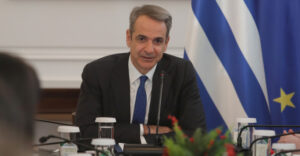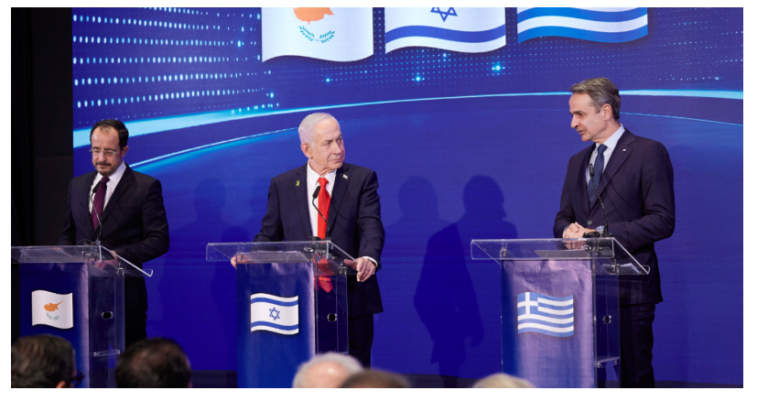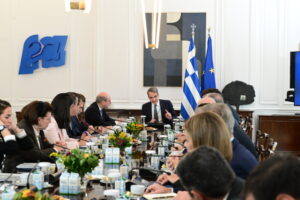A new case similar to the so-called “miraculous water of Kamatero” caught the attention of the Supreme Court judges. The only difference this time was that the supposed cancer-curing drugs were allegedly being secretly supplied by a research center in Russia. In the end, the drugs, which came in a milky liquid form, turned out to be nothing more than dissolved aspirin in water.
A secondary school teacher had formed friendships with a bicycle dealer, a bicycle mechanic, a retired insurance salesman, and a painter. One of the four had a child who was affected by McCune-Albright syndrome, a condition involving abnormal bone development.
At some point, the teacher began to experience motor problems due to the development of a tumour in the left hemisphere of the brain. He was hospitalized at a hospital, where “the tumor was diagnosed as inoperable and therefore underwent therapeutic radiation.” For a short time, there was an improvement in his health, but then there was an increase in the tumour in the brain area, with evidence of necrosis.
After the diagnosis of the professor’s health problem was made known to the company, the plan for his financial bleeding began. One of his friends told him “in the form of a confession that he was cured of his serious health problem with the assistance of his father-in-law (a person involved in the case), who on the recommendations of Holy Mountain persons had gained access to an unofficial research center, which was secretly operating in Russia.” He was also told that this centre, after testing the patient’s DNA, “prepares a personalised medicine” and makes it available “through third parties as intermediaries, for a fee”.
“He saved my child”
To make the narrative believable, it was pointed out to the professor that this research centre had also saved the child of one who suffered from degenerative bone disease, spending 120,000 euros, with absolutely positive results.
He said, “conspicuously to the teacher that in contacts with the intermediaries there was necessary secrecy and confidentiality to exclude the leakage of information of the operation of the research center to the pharmaceutical companies, which would consider it to compete with them, and for this reason he had to maintain secrecy.”
The action plan went to a second stage, as the professor’s psychology had dropped considerably due to the mobility problems he was experiencing. He was persuaded that he needed to contact the research centre. Thus, he was told that “he would have to provide hair from his hair as a DNA sample for the test to be carried out by the research centre, paying the sum of 6,000 euros”. Indeed, he handed over to one of his friends “hair from his hair in a sterile box”, as well as 6,000 euros.
The days went by without the medicine reaching Greece, however, and his health deteriorated. They asked him for a second DNA sample without money this time, so that Russian scientists could see the progress of the disease. An appointment was made in a cafeteria and one of the friends “in the toilet area, took saliva on a napkin, put it in a vial he had with him and pulled hair from his chest.”
Treatment €87,000
The conclusion from research centre then arrived with two treatment solutions. “With the first one, costing €55,000, the Russian center guaranteed a long-term cure, and with the second, higher cost, €87,000, a treatment with cell regeneration at 95%, because the rest of the cure would not be possible due to cell destruction.” The teacher accepted the 87,000 euro proposal.
The drug would come to Greece in three doses. “The first would stop the problem, the second would correct it and the third would eliminate and regenerate the cells.” But he would have to pay an extra 1,500 euros as expenses for the pilots who would bring the drug in complete secrecy.
Finally, the notorious drug arrived. An appointment was arranged by conspiratorial procedure and one of the friends “took from his jacket a common plastic bottle of 1/2 litre water, without a label, containing up to its middle a cloudy white liquid, which he shook and filled the glass of the professor, who drank it, feeling a familiar taste, without being able at that moment to identify it.”

“You’ll see the MRIs”
When he arrived home the teacher called his friend “expressing concern that he had tasted aspirin, whereupon he replied in a strong tone, ‘What are you talking about? When you see the MRIs, which will be fine, what are you going to say then?”
The next installment on various improbable grounds was delayed. Already the professor had begun to have doubts since the alleged drug “resembled aspirin in taste” and he had felt “no positive effect on his state of health”. Eventually, he realised he had been deceived and went to the GDA.
Over a period of 10 months, the four friends collectively swindled approximately €100,000 from the professor. They were found guilty of serial joint fraud and each received a 4-year prison sentence, convertible to a fine at a rate of 10 euros per day of imprisonment. The Supreme Court dismissed their appeal, in which they sought to overturn the conviction by the Athens Court of Appeal for Criminal Offences, and referred the case back to the same court solely for the recalculation of the sentence.
Ask me anything
Explore related questions





